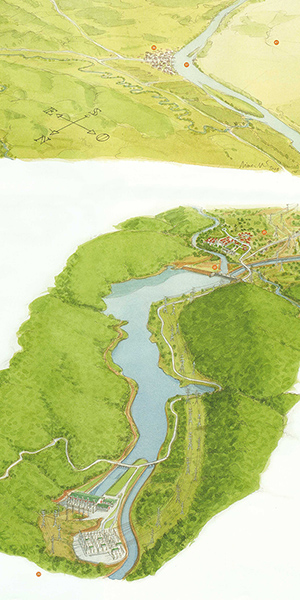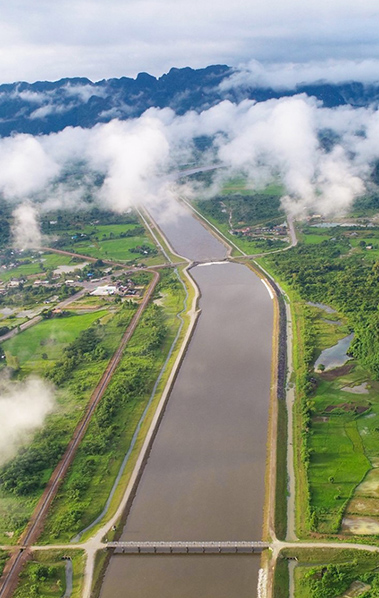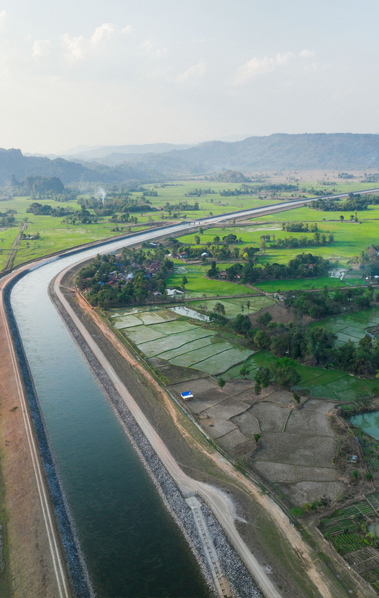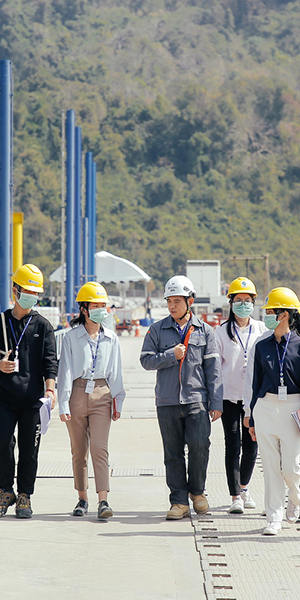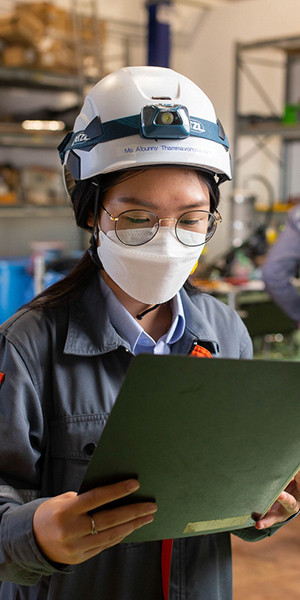When project construction began, one of the first tasks was to ensure that activities did not cause unaddressed problems for local people. Building the new roads, Power Station, Switchyard and transmission lines, plus Regulating Pond and Downstream Channel, caused disturbances for villagers, including loss of land. To compensate families, and offer livelihoods assistance to those most affected, Nam Theun 2 established a ‘Project Lands’ team in Gnommalat.
The team toured villages to explain the expected social impacts and mitigation measures. Following consultation and detailed surveys, compensation was provided to all households that lost assets. Replacement infrastructure and water supply was needed in a few cases, while livelihood restoration activities were provided for households whose income was affected by more than 10% of its total. Activities on offer included animal raising, rice improvement, mushroom growing and horticulture, plus vocational training to improve technical skills.
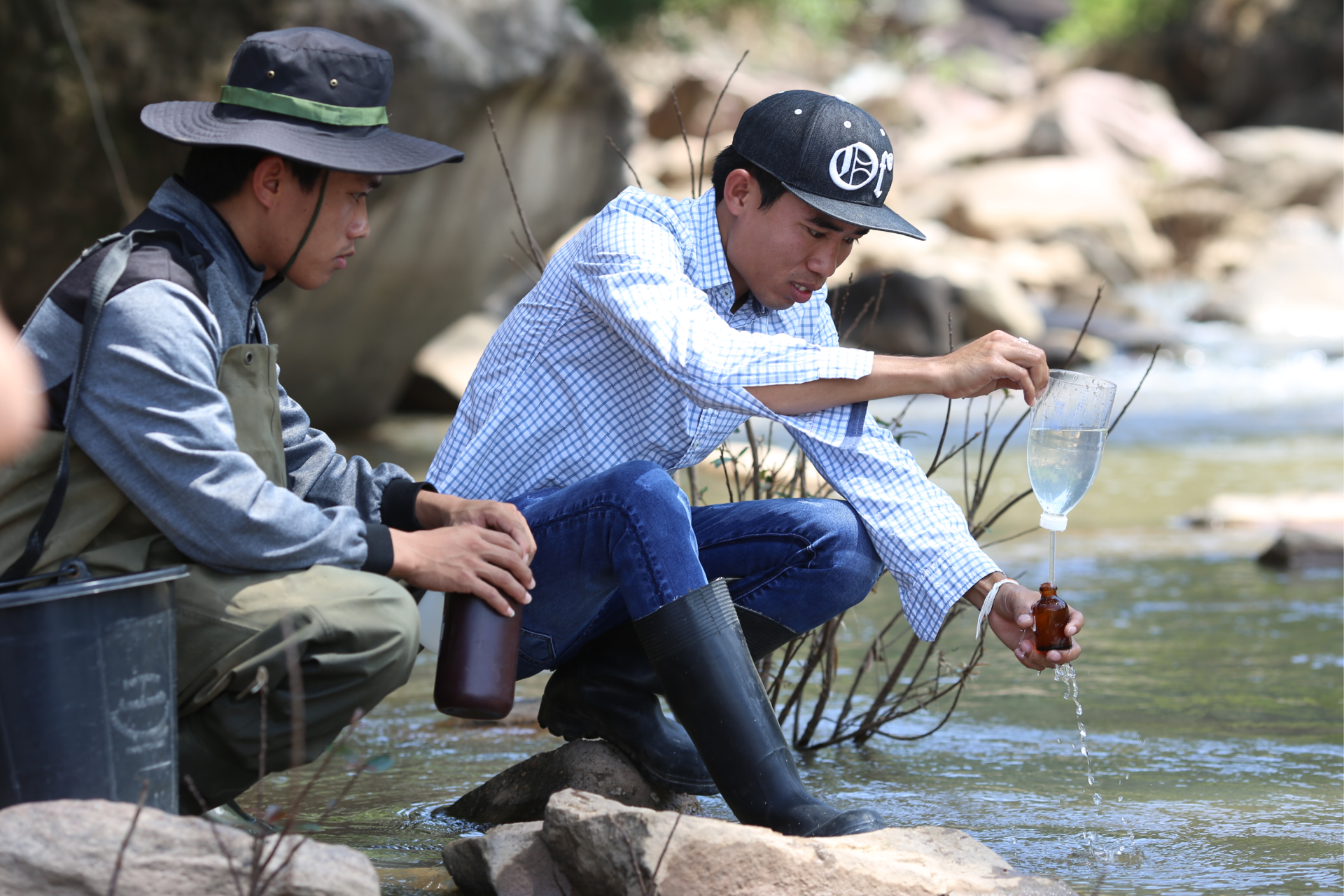
Nam Theun 2 is a trans-basin hydro project, meaning it diverts water from one river, the Nam Theun, to another – the Xe Bang Fai. The depth and water flow or hydrology in these rivers is changed, with less water now flowing in the Nam Theun and more water running in the Xe Bang Fai.
Changes in hydrology can affect the environment and the lives of people along or close to riverbanks. The Nam Theun 2 Downstream Program was set up to monitor what changes the Nam Then 2 project might cause, and to minimize or mitigate any negative effects from its operation.
The program works in two main areas: along the Nam Theun, downstream of Nakai Dam, and downstream of the Power Station along the Xe Bang Fai and its tributaries. The strategy varies according to the impacts expected in each area. In summary, Downstream Program teams look to improve people’s livelihoods, water supply and sanitation systems so that any potential effects on fish catch, water quality, or changes in water levels are compensated for before they cause damage.
Related Articles
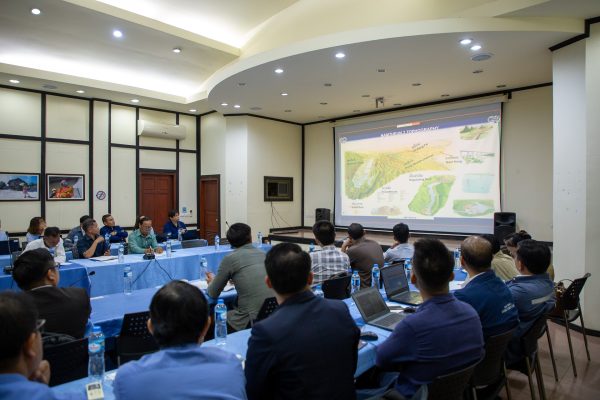
Annual Adaptive Management Committee Meeting 2025: Enhancing Collaboration and Communication
March 12, 2025
Annual Adaptive Management Committee Meeting 2025: Enhancing Collaboration and Communication
March 12, 2025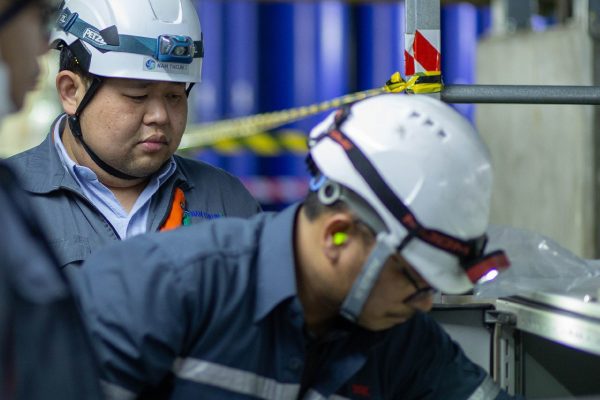
“Minor Overhaul & Yearly Outage” 2025 Outage Program for the Francis, Pelton Units Begins
January 14, 2025
